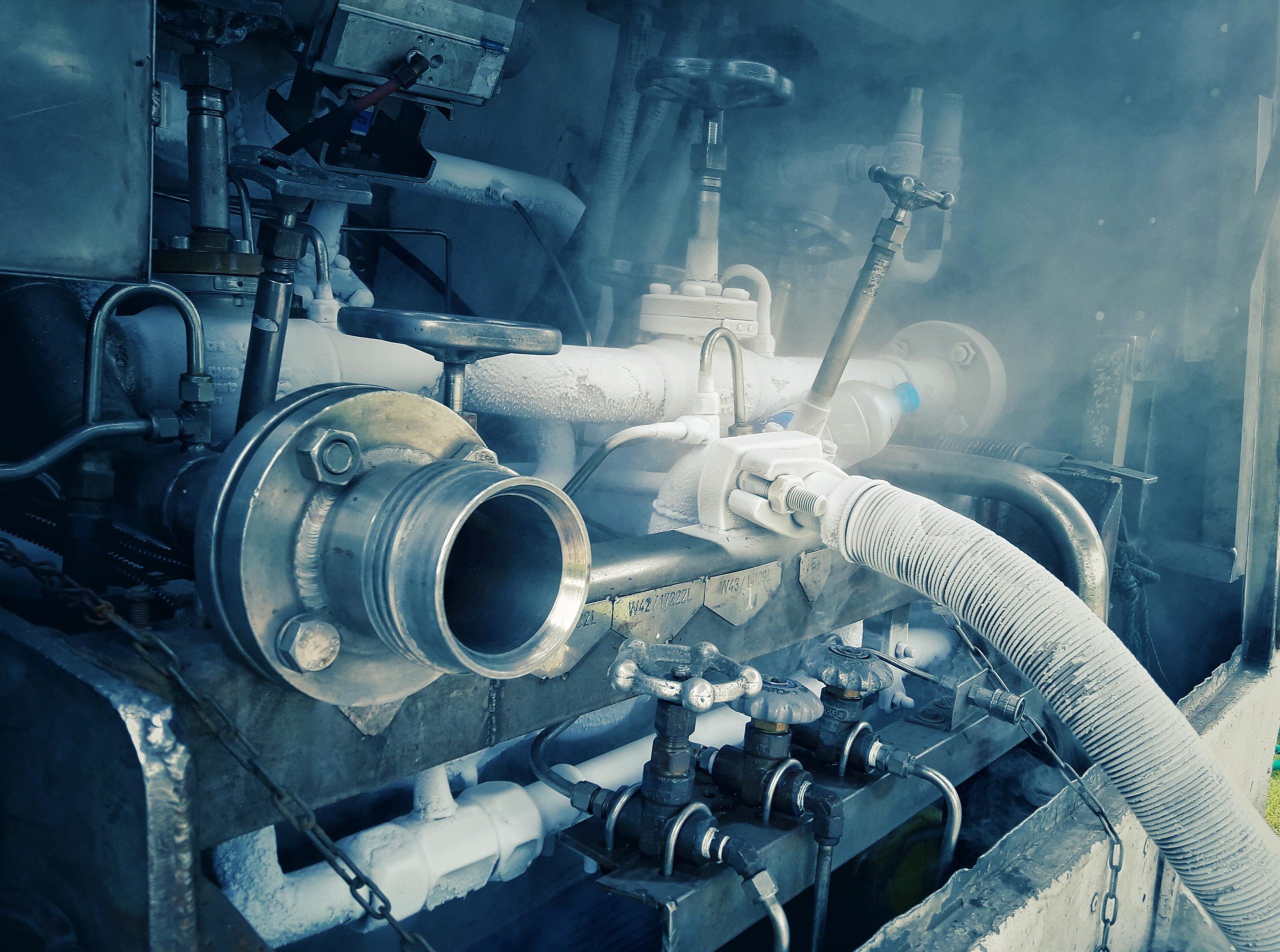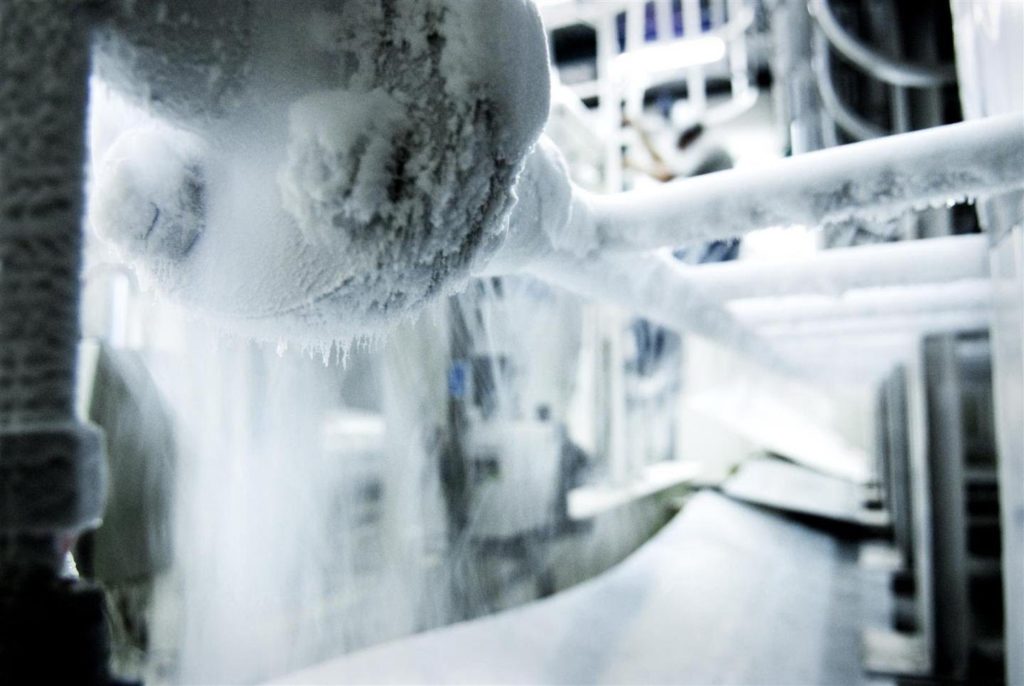Cryogenic hydrogen systems are among the most challenging to specify reliable sealing solutions for, with issues ranging from the extremely low temperatures to hydrogen permeability and embrittlement.
This blog post explores the challenges and proposes a proven solution: PTFE spring-energized seals. And discusses how Advanced EMC can help.
Challenges of Sealing in Cryogenic Hydrogen Systems
There are several key problems that arise when specifying a sealing solution for a cryogenic hydrogen application. Four of these are discussed below.
Extremely Low Temperatures
The first issue with sealing cryogenic hydrogen is the temperature. On average, hydrogen is stored and transported at about 253 °C. At such low temperatures, conventional elastomers will lose elasticity, shrink, and possibly crack. In addition, thermal contraction will cause the seal contact pressure to drop. And just because a seal is predicted to work at room temperature, it will fail disastrously when the temperatures drop to H2 storage temperature.
Hydrogen Permeability and Leakage Risks
Hydrogen is extremely small, with diatomic hydrogen being the smallest molecule in the known universe. This small molecular size means that H2 can diffuse through many different materials. The resulting permeability leads to serious risks of leakage or even explosive decompression during warm-up cycles. Resolution of these issues includes sealing solutions with exceptionally high tolerance, with a seal lip material that maintains integrity even at the molecular level.
Hydrogen Embrittlement
Hydrogen embrittlement is a problem for many materials. In short, hydrogen can diffuse into metal components and make them increasingly brittle over time. This embrittlement leads to cracked metal seal housings.
Material Compatibility
Many conventional seal materials will become unsuitable when cryogenic temperatures are reached. Examples include thermal expansion mismatches between components and a loss of flexibility, which are among the top problems. Material selection quickly becomes limited to options such as PTFE and certain fluoroelastomers because only a handful of materials can retain their flexibility, dimensional stability, and roughness at the temperatures required for handling H2.

Spring-Energized Seals for Cryogenic Hydrogen Systems
Spring-energized seals are advanced solutions composed of a polymer seal jacket with an internal metallic spring energizer. Because of the spring energizer, a consistent sealing force can be achieved even in the presence of issues such as dimensional shifts and contraction.
A properly designed spring-energized seal can effectively maintain a seal in liquid H2 environments. Such a seal can handle pressure cycling and dimensional changes, and reduces friction and wear compared to conventional seals.
Here’s a summary of how a spring-energized seal with a PTFE / filled PTFE jacket addresses the challenges described thus far:
| Challenge | Problem | PTFE Cryogenic Seal Advantage |
| Low Temperatures | Elastomers shrink, crack, and lose sealing force at –253 °C. | PTFE stays flexible and dimensionally stable with low thermal contraction. |
| Hydrogen Permeability | H₂ diffuses through many materials, causing leakage or decompression. | PTFE has low gas permeability; spring-energized lips maintain tight contact. |
| Hydrogen Embrittlement | Metals become brittle and crack under hydrogen exposure. | PTFE is immune to embrittlement and protects surrounding components. |
| Material Compatibility | Most materials fail due to brittleness or expansion mismatch. | PTFE retains flexibility, stability, and chemical resistance at cryogenic temperatures. |
Advanced EMC Spring-Energized Seals
At Advanced EMC, we specialize in PTFE spring-energized seals. We offer cryogenic-rated PTFE jackets that use corrosion-resistant metal allows, such as Hastelloy or Inconel, for the enclosed energizers. Precision engineering and manufacturing mean optimized hacket profiles for containing H2 and machining as needed to achieve an extended service life. We have developed sealing solutions for various industries, and offer tailored spring force, geometry, and material properties for spring-energized solutions.
Conclusion
Sealing cryogenic liquid H2 involves major challenges. The extremely low temperatures, hydrogen permeability, hydrogen embrittlement, and material compatibility all lead to problems that conventional sealing solutions do not address well. Spring-energized PTFE seals, however, address these issues and more for a robust, rugged, and reliable solution.
Advanced EMC’s expertise ensures seals that meet the unique demands of cryogenic hydrogen systems, enabling safe, efficient use of hydrogen in advanced energy applications. Contact us today to learn more!



